Tomato Farming Information Guide:

Introduction of Tomato:- Tomato is a well known fruit/vegetable across the globe. Most of the countries cultivate tomatoes in the world. Tomato is a native to Peruvian & the region of Mexico.
Commercial cultivation of tomatoes such as greenhouse tomatoes, hydroponics tomatoes, polyhouse tomatoes apart from open field tomatoes are pretty much successful everywhere in the world.
The main advantage of tomato farming is, it can be grown from pots in backyard to highly commercial fields. Tomato belongs to the family of “Solanaceae” and genus of “Lycopersicon”. Basically it is a herbaceous sprawling plant growing to 1 meter to 3 meter in height and their flowers are in yellow colour. The tomato size depends on the cultivar (variety) as there many hybrid/commercial varieties available in the market. Tomato is the world’s largest vegetable crop after potato and sweet potato. However it tops the list of canned vegetables.
Nutritional Values and Health Benefits of Tomato:- The following are the health benefits of tomatoes.
- Tomatoes are a good source of potassium.
- Tomatoes are good for eye health.
- Tomatoes are good for digestion.
- Tomatoes are powerful blood purifiers and clear up urinary tract infections.
- Tomatoes are a good source of vitamin ’C’ & ‘A’. They have excellent anti-oxidant properties.
- Tomatoes are high in fiber and very good for weight management.
- Tomatoes help in fighting cancer.
- Tomatoes help in maintaining blood health.
- Tomatoes help in reducing the risk of heart disease.
Tomato Production Countries in Asia:- When it comes to Asia region, China is No.1 producer followed by India. The following chart shows the production wise countries in the world.
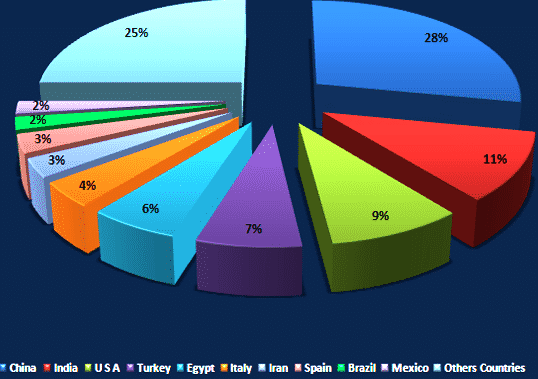
Major Production States in India:- Tamil Nadu, Karnataka, Andhra Pradesh, Telangana, Orissa, Chhattisgarh, Gujarat, Maharashtra, Jharkhand, Bihar, Rajasthan, Haryana , Punjab, Himachal Pradesh.
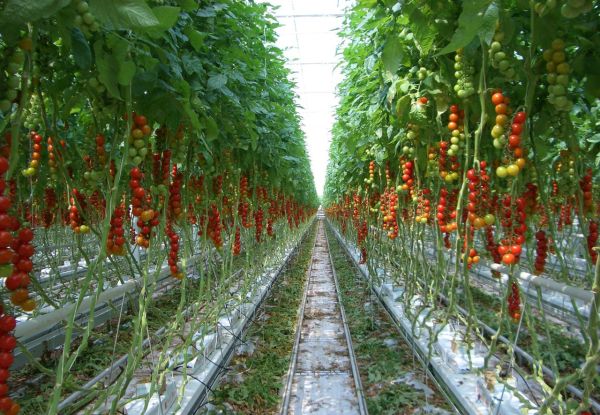
Local Names of Tomato in Asia:- The following are the local names of tomato in Asian countries.
الطماطم (Arabic), Kha Yan Khin Thee (Burmese), Beenbo (Cambodian), Xihongshi(Chinese),Kamatis (Filipino), Fan Qie (Mandarin),Makhuea thet (Thai), Ca Chua (Vietnamese),とまと (Japanese), Domates (Turkish),Tomato/Tamaatar (India),Goujeh Farangii(Persian),토마토 (Korean),Thakkali (Sinhalese/Sri Lanka), Kam’afbit(Taiwanese),Ulaan lool (Mongolian).
Tomaatar (Hindi),Thakkali (Malayalam),Tomat (Konkani),Takkali Pazham (Tamil),Tameta (Gujarati),Bilati Baigana(Oriya),Khamen Asinba (Manipuri), Bilahi (Assamese),Ruwangum (Kashmiri),Tamaatar (Bhojpuri),Tamatar(Punjabi),Toamaatar (Bengali), Thakkali Pandu/Tamata (Telugu), Tomato (kannada),Tomato/Tamata (Marathi), Vartki (Sanskrit).
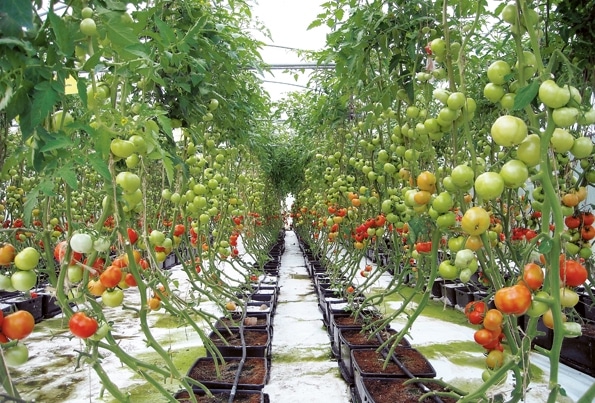
Tomato Varieties:- Some of the world varieties of tomatoes are as follows.
Adoration, Azoychka, Alicante, Better Boy ,Beefsteak, Big Rainbow, Blaby Special, Black Krim, Campari, Celebrity, Cherokee purple, Garden Peach, Early Girl, Great White, Green Zebra, Jubilee, Japanese Black Trifele, Kumato,Lillian’s Yellow, Matt’s Wild Cherry, McDreamy, Roma,San Marzano, Santorini, Super Sweet 100,Tomaccio and Sasha Altai.
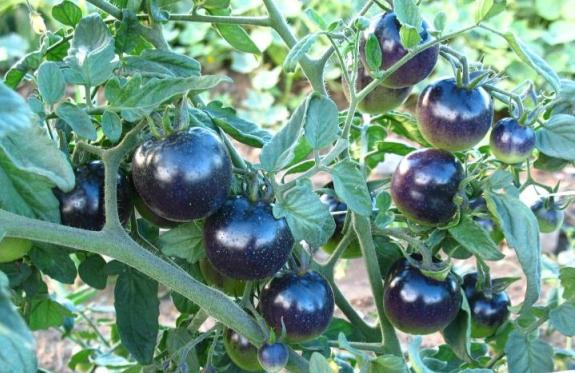
Climate Required for Tomato Farming:- The tomato is a warm-season crop and grows well under an average monthly temperature of 21°C to 30°C.Tomatoes can be grown at mean sea level of 1500 meters in both tropics and subtropics. Frost and high rainfall regions will have yield reduction. Well distributed annual rain-fall of 50 to 150 cm is ideal for its growth and better yield. The winter crop can be planted from the month of Aug to Sept and this would be ideal for organic tomato farming. Hot and dry spells require frequent irrigated conditions. Extreme hot winds, high rains and high humidity will damage the tomato crop.
Soil Requirement for Tomato Farming:- When it comes to soil preparation, farmers are advised to got for soil testing before planting the crop. Tomatoes can be grown in all types soils from light sandy to heavy clay. Light soils are best for an early crop, while clay loam and silt-loam soils are best suited for heavy yields. However, well-drained sandy loam soils with good organic matter are best suited for tomato cultivation. Avoid high acidic soils as they are not suitable for tomato farming. Generally, 3 to 4 quintals of suitable lime should be applied in the main field in an interval of 3 years it reduce the acidity level of soil to tolerable limits. Tomatoes require soil pH of 6.0 to 7.0 for its best growth and quality of fruit.
Land Preparation, Seed Rate, Spacing and Plantation in Tomato Farming:- Land should be prepared to make weed free and bring the soil to the fine-tilth stage. This can be achieved by giving 2 or 3 ploughings. Make sure to have good soil drainage and supplement well rotten organic matter like cow dung in the last ploughing and 10 kg of carbofuran granules or 200 kg of neem cake per hectare land should be incorporated into the field. In case of any acidic soils, add appropriate lime to reduce the acidic affect.
For raising the tomato seedlings in nursery bed 300 to 500 grams/ha seeds are required.
Tomatoes can be grown during any time of the year provided there is enough irrigation is available. Usually, farmers can make 3 crops in year in the regions where there is no danger of frost. The best planting season in tomato farming is first transplanting should be in Dec – Jan, Second should be in June – July and Third should be in Sept – Oct months depending on the irrigation facilities available.
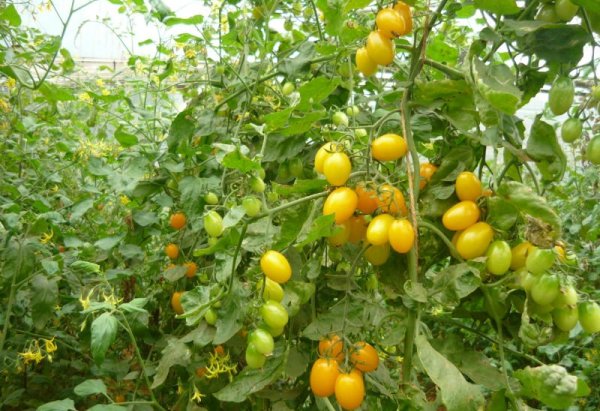
Propagation and Raising Seedlings in Tomato Farming:- Propagation is done through seeds. In case of nursery raised seedlings, these are grown before 1 month of transplantation on raised beds width of 60 cm to 100 cm and of convenient length. Soil solorization of nursery bed should be done by covering with white transparent polythene sheet for 1 month to 45 days. This will take care of any weed growth, fungus, bacteria, nematode as well as insect pests. For each m2 (sq.meter) area of nursery area, 5kg of well rotten farm yard manure and 20 grams of each N, P and K fertilizer along with 2.5 grams of carbofuran or 200 grams of neem cake and 10 to 25 grams of tricoderma should be applied. As part of the preparation of nursery bed, neem cake or neem leaf or caster cake or caster leaf should be incorporated @ 350 to 400 grams/sq.meter (m2) to protect from nematodes.
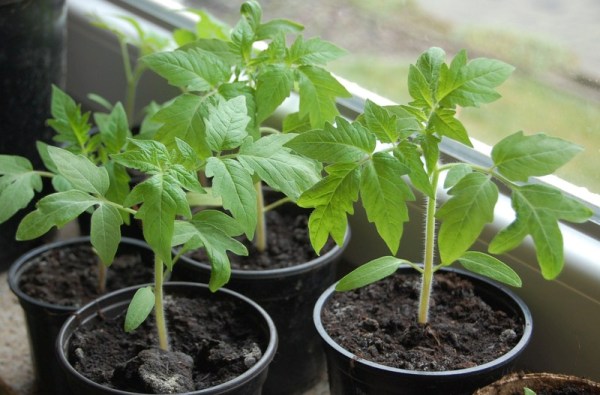
To prevent from damping off disease, tomato seeds should be treated with carbendazim 2 grams/Kg seed or Tricoderma @ 5 to 10 grams/Kg seed. Once the seeds are treated, they should be dried in shade for 30 to 45 minutes and should be sown on beds along the lines in 1/2 cm depth and then they should be covered with top-soil.
Once seeds are sown in beds, mulching can be done using green leaves. As usual, irrigation needs to be given daily in the morning by using rose-can. Once seeds start germination, remove the mulch immediately and cover the nursery bed with fine nylon net to prevent from virus transmitting insects.
Three to four weeks seedling can be transplanted in the main field. The transplanting should be done in small lat beds or in shallow furrow depending upon irrigation availability. In case of heavy soils, they should be transplanted on ridges. As part of training the plants, the seedlings should be staked using bamboo sticks of 2 meter length or planted in broad ridge of 90 cm width and 15 cm height. The seedlings should be planted in furrows at a spacing of 30 to 35 cm. The recommended spacing for autumn-winter crop is 75 cm x 60 cm and spring-summer crop 75 cm x 45 cm.
Manures and Fertilizers in Tomato Farming:- During the land preparation, well-rotten farm yard manure (FMY) of 25 tonnes/ha should be incorporated in the land. The recommended dose of N: P: K is 75:100:100 kg/ha and as part of top dressing, apply 75 kg of ‘N’ at the flowering stage. Foliar applications recommended to enhance fruit emergence and Napthalin Acitic Acid (NAA) @ 20 pm at 60 and 75 days after transplanting is preferred.
Irrigation in Tomato Farming:- In tomato cultivation, irrigating the crop at right is very important for proper plant growth, quality of fruits and yield. It is necessary to maintain an even moisture supply. In dry hot or during summer season, Irrigation needs to be carried out at 4 to 7 days interval. Again, irrigating the crop depends on the soil type, moisture level, and weather conditions. Generally, in winter season, crop should be irrigated at 8 to 12 days interval. A period of drought conditions followed by sudden heavy irrigation/watering during the fruiting stage may cause cracking of fruits. Drip Irrigation is highly recommended in the regions with scarcity of water. Irrigation interval of 2 to 3 days is generally recommended with drip irrigation system.
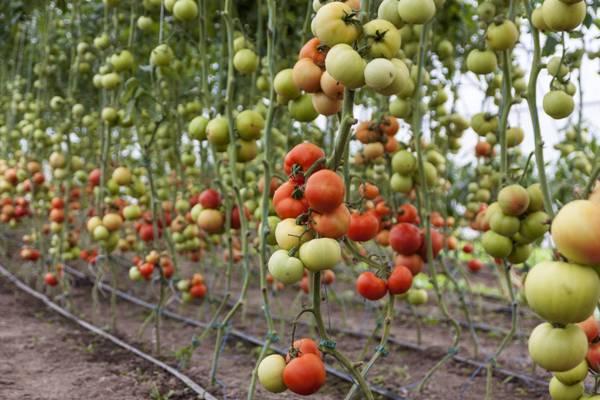
Intercultural Operations/Weed Control in Tomato Farming:- Light hoeing should be carried out during initial month in the field to encourage the plant growth. Make sure to loosen the surface soil by hand hoeing as soon as dry enough after every irrigation or shower and remove any weeds during this process. Mulching material like black polythene, straw, or any other materials can be used to conserve the soil moisture and control the weed growth.
Pests and Diseases in Tomato Farming:- The following are the common pests and diseases in tomato farming.
Insect Pests: Serpentine leaf miner, Gram pod borer, Tobacco caterpillar and Root-Knot Nematode are main insect pests found in tomato cultivation.
Pest Control Measures:
- Two rows of marigold plants for every 16 to 18 rows of tomato can be grown as a trap crop. Marigold flowers attract egg laying of H. armigera.
- Spraying 5% of neem seed kernel extract can kill early stages larvae.
- Placing 15 to 20 bird perches (T-shaped)/ha helps in inviting insectivorous birds.
- Spray NPV @ 625 LE/ha during evening hours.
- Jaggery @ 1 kg, sandovit or Teepol(100 ml) should be mixed with NPV on need basis and spray 2 ml of Endosulfan, Chlorpyriphos or Quinolphos/litre of water.
- Apply chopped leaves of Pongamia or Crotalaria to reduce the disease severity caused by nematode.
Diseases: Tomato crop is attacked by many types of fungus, bacteria and viruses. The most common diseases found in tomato farming are bacterial spot, anthracnose, bacterial blight, damping off, bacterial canker, buck eye rot, early blight , leaf curl, mosaic, powdery mildew, rots, fusarium blight, late blight, and septorial leaf blight.
Disease Control Measures:
- Soil solorization or partial sterilization of the soil by burning trash on the soil surface.
- Seed treatment with tricoderma 5 to 10 grams or carbendazim 2 grams or thirum 3 grams/Kg seed.
- Crop rotation with non-solanaceous and field sanitation.
- Providing better water drainage and uproot the heavily infected or virus infected plants.
- Sanitation and crop rotation reduces the disease incidence.
- Spraying the plants with a mixture of Streptocycline 200 ppm and Copper oxychloride 3 grams/liter of water controls the disease.
Harvesting in Tomato Farming:- Maturity of tomato plants is achieved after 8 to 12 weeks of planting or seeds attain maturity 30 to 35 days after flowering period or . Fully matured, red, ripened and healthy tomatoes alone should be harvested. First 6 to 7 pickings should be used for seed extraction. While picking, care should be taken to avoid any damage to plant. Once the fruits are harvested , they should be graded based on the size and quality. Store them appropriately and send them to local market.
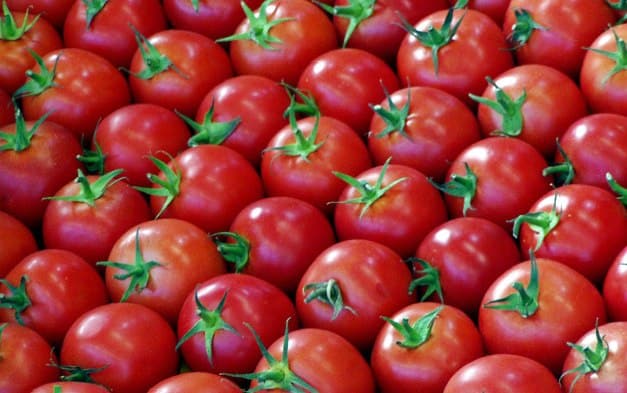
Yield in Tomato Farming:- The yield of the crop depends on many factors like soil type, cultivar (variety) grown, irrigation facility. An average yield of 25 to 30 tonnes of tomatoes per hectare can be achieved in open field farming. In Greenhouse tomato farming, 60 to 100 tonnes of tomatoes and in Hydroponics farming, 150 to 250 tonnes can be expected.
In case of cherry tomatoes, in open field 15 to 20 tonnes/ha, in Greenhouse farming, 30 TO 40 tonnes/ha and in Hydroponics farming, 75 to 100 tonnes/ha can be obtained.
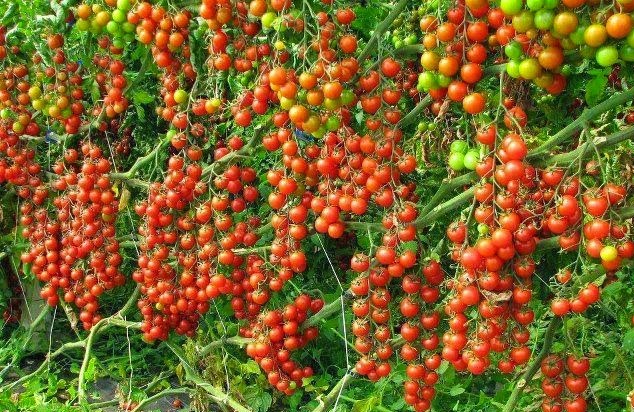
For Indian agriculture : Read here.

Hello this article has impacted alot of knowledge